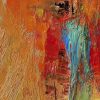Wars are notorious for having unintended consequences, and there are countless examples of their acceleration of organizational, scientific, technical, social, and political change. World War I was no exception, and the years immediately after the war brought many fundamental chances in European and American society. Here I will refer only to some remarkable developments in the organization of social and humanistic research in the United States.
“From today’s perspective, these were perhaps the most momentous five years in the organizational history of American scholarship.”Consider these consequential events. In 1919, representatives of a number of scholarly societies established the American Council of Learned Societies (the immediate stimulus was to participate in the formation in Europe of their International Union of Academies). In that same year, a unique college was founded in New York, the New School for Social Research. In 1923, there was an organizational meeting that initiated planning for the 15-volume Encyclopedia of the Social Sciences (Macmillan 1930-1935), hailed by many as the first major collaborative project of American scholarship. At another meeting, the same year, representatives of four major social science associations founded the Social Science Research Council; when it was incorporated the next year, three other professional associations also participated. From today’s perspective, these were perhaps the most momentous five years in the organizational history of American scholarship.
The stated purpose of all these institutions and enterprises was to stimulate and coordinate research, particularly what is now called “interdisciplinary” research. Accordingly, it is reasonable to expect that the founding documents and the early statements of purpose would include the word “interdisciplinary” in order to describe this intention. But this seems not to have been the case.
I was stimulated to look into the origin and the use of the word “interdisciplinary” by an inquiry from Roberta Frank of the Centre for Medieval Studies of the University of Toronto. Her hypothesis was that the word had been invented at the Council. I said in reply to her letter that I would look into the matter, but that my guess was that the word had entered the language from the physical sciences, and could perhaps be located in the early documents of the National Academy of Sciences in Washington.
“Plainly, someone had to invent the word ‘interdisciplinary.’”I turned to search the records and periodicals of both the Council and the American Council of Learned Societies. I also searched the long introductory essays in Volume 1 of the Encyclopedia of the Social Sciences. Nowhere could I find “interdisciplinary” in the publications of the 1920s, although it is clear that the idea underlying it was everywhere. The International Union of Academies encouraged “collective researches,” 1American Council of Learned Societies. Bulletin. Number 1, October 1920, page 8. while the Council asserted in its Annual Report for 1925 that “ordinarily the Council will deal only with such problems as involve two or more disciplines.” 2Social Science Research Council. “Report for the Year 1925 Made to the American Political Science Association by Charles E. Merriam, Chairman,” American Political Science Review, February 1926, page 186. Plainly, someone had to invent the word “interdisciplinary.” The rationale for my own search for the smoking gun was not antiquarianism, but rather the opportunity it provided to examine these early records and to relive vicariously the discontent of these founding fathers with the status quo and their efforts to change it by somehow combining the methods and perspectives of the different disciplines. Without Roberta Frank’s question in mind, I could not have read these dusty records with such fresh eyes and with such an inquiring mind.3The recently-revived poet, Robert W. Service, justifying participation in the Yukon gold rush during the 1890s, stated: “Yet it isn’t just the gold that I’m wanting/So much as just finding the gold.” (1907)
My investigation led me to the reports of the Council’s six famous Hanover conferences of 1925-1930. In those long ago, non-air conditioned years, the Council’s board, staff, and committees, along with assorted guests, would meet in Hanover, New Hampshire for several weeks in August and September to review the Council’s program and the state of the social sciences more broadly.4 For a brief account of the Hanover conferences, see Items, June 1980, pages 35-37. See also the biography of one of the Council’s principal founders: Barry D. Karl, Charles E. Merriam and the Study of Politics. University of Chicago Press, 1974, pages 134-136. At the 1930 Hanover conference, a statement about the Council’s program was formally adopted by the board. It included the assertion that “It is probable that the Council’s interest will continue to run strongly in the direction of these interdiscipline inquiries.”5Social Science Research Council. Sixth Annual Report. 1929-1930, page 18. Not quite “interdisciplinary,” but close. At least I had found an answer to Roberta Frank’s question.
An interesting sequel to the story suggests that the course of interdisciplinary research then (as now) did not always run smoothly. The University of Chicago sociologist Louis Wirth was commissioned by the Council to prepare a report on its history, activities, and policies; he submitted the report August 1937. In it, he had rather harsh words to say about the Council’s ambitions for interdisciplinary research:
It may also be said the Council has allowed itself to some extent to become obsessed at times by catchphrases and slogans which were not sufficiently critically examined. Thus there is some justification for saying that much of the talk in connection with Council policy, especially in the early years, about cooperation and interdisciplinary research turned out to be a delusion. 6Social Science Research Council. “Report on the History, Activities, and Policies of the Social Science Research Council.” Prepared by Louis Wirth for the Committee on the Review of Council Policy. Mimeographed. August 1937, page 145.
Eleanor C. Isbell, the Council’s staff associate emeritus, called the Wirth report to my attention, and expressed the view that there must be something missing in the record thus far established between 1930 and 1937. She believes that there must be unpublished (or even published) uses of the term during these years; else Louis Wirth would not have emphasized the word so much in his 1937 report. 7Letter, Eleanor C. Isbell to David L Sills, February 28, 1986. In short, “much of the talk” must have been written down somewhere.
Unfortunately, the Wirth report was never published and his use of “interdisciplinary” cannot be a true “first” in these etymological Olympics. Later that year, in December 1937, a notice of the availability of Council fellowships reprinted in the Journal of Educational Sociology referred to “training of an interdisciplinary nature” (page 251). This is currently the earliest published use of the word “interdisciplinary” in the files of Merriam-Webster. 8Telephone conversation with Frederick C. Mish, editorial director, Merriam-Webster, March 11, 1986.
In the meantime, Roberta Frank pursued her research into the publications of the National Academy of Sciences, with little success. She did uncover a 1871 newspaper report on Alfred Mayer’s successful investigation into the “hum of the mosquito’s wing” being attributed to the “interfiliation of seemingly divergent sciences” and the advocacy by the National Academy of Sciences in 1909 of “the crossing of disciplines.” But she reported to the Council, “You’re still the first.” 9Letter, Roberta Frank to David L. Sills, February 21, 1986.
The search continues, and readers are invited to participate in it and send in their results. I searched, but hardly exhaustively. The founding documents of the New School for Social Research have yet to be examined, as well as those of Yale University’s Institute of Human Relations, founded in 1929 for the express purpose of breaking down disciplinary boundaries. A nearly-forgotten 1927 book edited by William F. Ogburn and Alexander A. Goldenweiser, The Social Sciences and Their Interrelations, 10Ogburn, William F., and Alexander Goldenweiser. The Social Sciences and Their Interrelations. Boston: Houghton Mifflin, 1927. Print. seems not to use the word “interdisciplinary,” but what about the sources used by the authors and editors? There is much research yet to be done.
As the Russian proverb has it, “Not finding a needle in a haystack is no proof.”
Roberta Frank went on to publish her research findings in an edited volume that was later reprinted in Items with the permission from the publisher. You can now read her essay “Interdisciplinary: the First Half Century,” in our print archive here.
David L. Sills (1920-2015) was a distinguished sociologist, leading demographer, longtime editor of the SSRC publication Items, and editor of the classic 1968 International Encyclopedia of the Social Sciences. A deeply influential senior member of the Council’s staff from 1973 to 1989, Dr. Sills was a recipient of the Distinguished Career Award for the Practice of Sociology from American Sociological Association.
This essay originally appeared in Items Vol. 40, Issue 1 in March 1986. Visit our archives to view the original as it first appeared in the print editions of Items.













